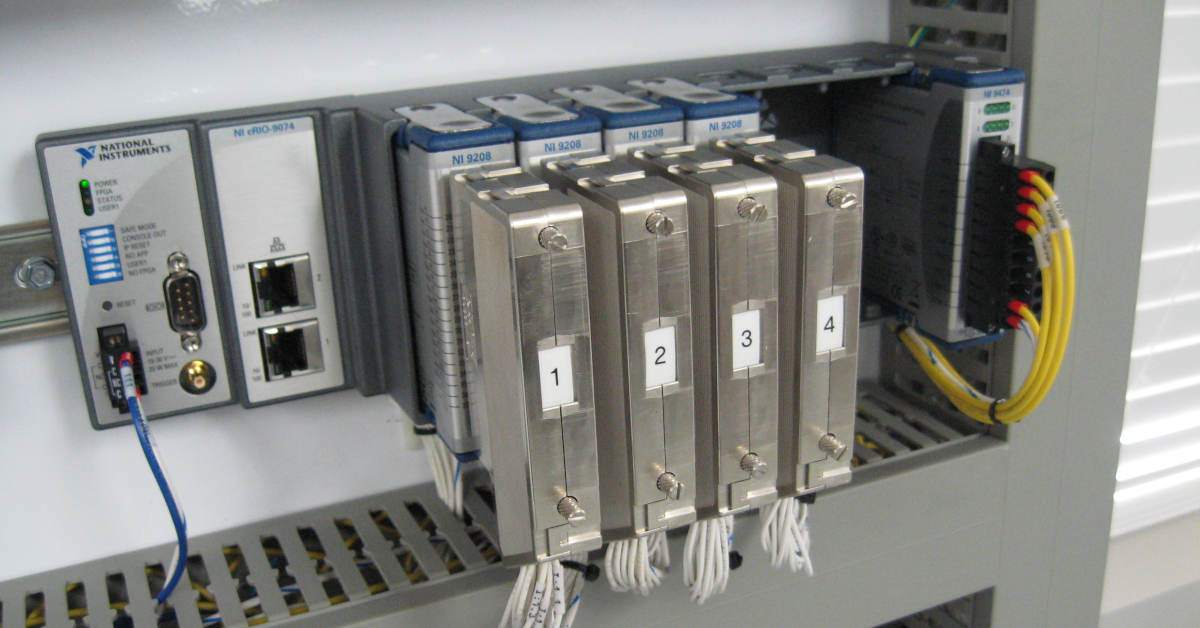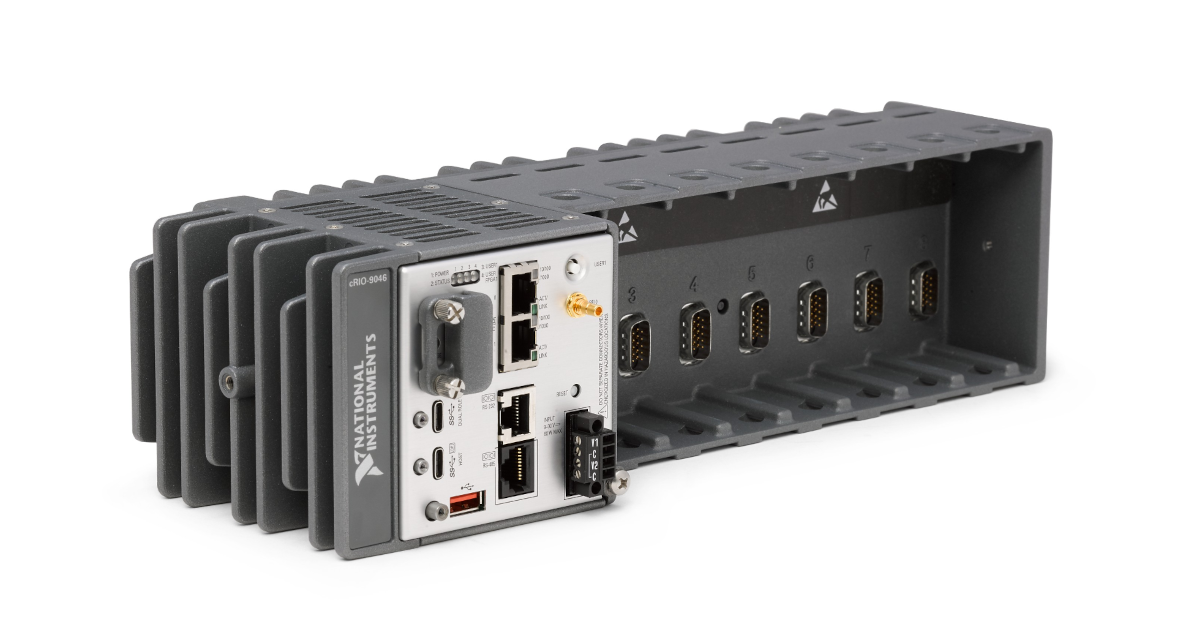Test Cell Vibration Monitoring
A large-engine manufacturer had test cells with severe vibration levels…
A large-engine manufacturer had test cells with severe vibration levels…

Are you contemplating updates to your industrial monitoring hardware? Perhaps a COVID slowdown has given your team time to finally upgrade to that latest and greatest National Instruments controller.
Before you make that leap, there’s one extremely important factor to consider, and that is the software running your equipment. If your code isn’t ready, there is far more to consider than a simple hardware swap, and your crew could be headed toward a serious loss in productivity and efficiency.
The reality is that production engineers are routinely staring at industrial monitoring equipment that is nearing or reaching end-of-life, and they need to act to prevent unforeseen failures. The team at Integrated Test & Measurement can help with hardware upgrades, but we can also dive into your software to be sure your code is up to date and any customizations that have been made over the years are updated to assure your complex equipment is communicating the way it was designed to and all signals continue to report properly.
Why is this holistic hardware/software approach recommended when it comes to upgrades? Consider the situation where a client upgrades a control module on a test cell only to find out that the new equipment is no longer compatible with the old software. It is akin to adding a new printer to your desktop computer without upgrading the drivers. Only in this instance, the fix is far more complex than a quick download. The result is that piece of equipment may now need to come offline for an extended time, and if you don’t have an in-house spare, your industrial monitoring is about to take a hit.
ITM has seen an uptick in requests for assistance from clients who are running either outdated hardware, software or both. In some instances, partners may no longer have access to the person who customized their software. But that is no problem for ITM. Our LabVIEW experts are adept at not only understanding these complex software changes but they can clean up your code to simplify future upgrades, too. In other words, if your programming resources are no longer available, look to ITM for support with code enhancements, development and updates.
One common migration for ITM’s industrial monitoring clients, for example, is moving from an older NI CompactRIO to a newer more suped up CompactRIO. A common mistake in this and other instances is underestimating the time it may take to update custom software, so rather than trying to do the work in house, let ITM speed up your process.
Our experts can travel to your site, evaluate both your equipment and your software running it to develop and implement an upgrade plan that works for your team. Whether that means a slower measured approach or a quick turnaround on a tight deadline, ITM will develop a custom solution that meets your needs.

One of the tools our embedded software engineers commonly use for industrial control and process monitoring applications is the NI CompactRIO (cRIO) controller. These controllers let our engineers deploy autonomous systems that use complex algorithms to generate process outputs or key performance indicators (KPIs) from structural, vibration, and process monitoring sensors.
For example, in one of the latest industrial boiler monitoring applications, we embedded a cRIO-9046 controller with our Sootblower Fouling Detection (SFD) algorithms which are used to compute and then output equipment health and process efficiency KPIs. Let’s take a look at the cRIO-9046 controller’s specifications, functionality and programming.
cRIO-9046 is an 8-Slot CompactRIO Controller that has an Intel Atom 1.30 GHz Dual-Core CPU, 2 GB DRAM, 4 GB Storage, a Kintex-7 70T FPGA that can operate from -40 °C to 70 °C. The eight slots are used for C-Series conditioned IO modules that connect sensor inputs and data/control outputs and buses.
Its operating system, NI Linux Real-Time (64-bit), allows real-time performance with the usability desktop operating systems. Our engineers use Xilinx Kintex-7 7K70T FPGA to implement high-speed, (MHz) low-latency hardware-level data processing and decision-making. The cRIO-9046 also has several connectivity ports, including 2x Gigabit Ethernet, USB 3.1, USB 2.0, RS232, and RS485 ports.
Embedded LabVIEW developers can use these ports and standard communication protocol toolkits to develop standard or custom machine/system interfaces.
For a cRIO-9046 or other CompactRIOs to operate, custom LabVIEW RT applications must be developed and then deployed to each controller. Depending on the complexity of your application, you may also need to develop and deploy LabVIEW FPGA code to the cRIO’s FPGA. Over the years, our embedded software engineers have developed a standard architecture as well as software tools for communication and analysis routines to simplify the custom LabVIEW RT application development. They also have experience developing embedded LabVIEW FPGA code for advanced hardware-level signal processing.
For more information about the cRIO-9046 and our LabVIEW development capabilities, contact Mark Yeager via email at mark.yeager@itestsystem.com
Related Links
Check out this video of a Lego Test Cell Model that is controlled with an NI CompactRIO. ITM implemented an embedded vibration health monitoring application at an engine manufacturing company in Texas. The distributed system monitored and reported damaging engine dyno vibration levels on 10 engine test cells.
One solution for monitoring steam tube temperature/s located inside its utility boiler to make sure start-up conditions were met.

In search of a system that would send feedback to further optimize their production efficiencies and reduce energy costs, a paper mill company turned to ITM for help measuring the temperature of steam tubes inside its Recovery boiler.
The challenge our engineers faced was to not just log temperature measurements, but also to transfer this information to a remote computer, perform complex measurements and output results that would serve as a watchdog to ensure normal conditions.
Our solution was yet another example of finding a creative way to use existing National Instruments hardware and software to solve a complex problem.
— ITM President Tim Carlier
ITM | Integrated Test + Measurement
227 Water Street, Suite 300
Milford, OH 45150
Phone: 1.844.TestSys
Fax: 513.248.8453
Email: ITM Sales

ITM provides software development, structural and mechanical testing services, industrial monitoring, strain gauging, and data analysis solutions to clients on six continents. ITM is a recognized National Instruments Gold Alliance Partner.

